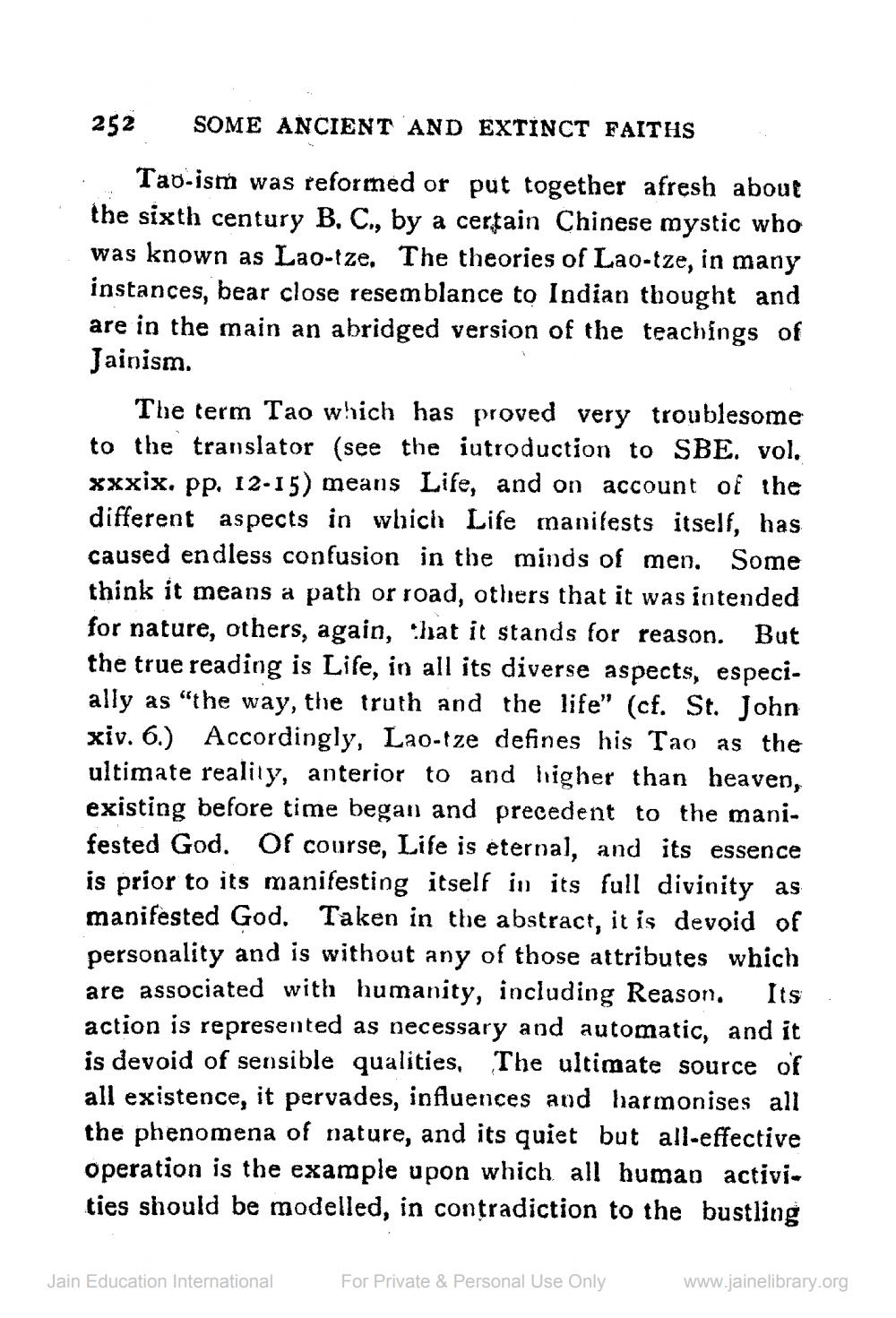________________
252 SOME ANCIENT AND EXTINCT FAITHS
Tao-ism was reformed or put together afresh about the sixth century B. C., by a certain Chinese mystic who was known as Lao-tze. The theories of Lao-tze, in many instances, bear close resemblance to Indian thought and are in the main an abridged version of the teachings of Jainism.
The term Tao which has proved very troublesome to the translator (see the iutroduction to SBE. vol. xxxix. pp. 12-15) means Life, and on account of the different aspects in which Life manifests itself, has caused endless confusion in the minds of men. Some think it means a path or road, others that it was intended for nature, others, again, that it stands for reason. But the true reading is Life, in all its diverse aspects, especially as "the way, the truth and the life" (cf. St. John xiv. 6.) Accordingly, Lao-tze defines his Tao as the ultimate reality, anterior to and higher than heaven, existing before time began and precedent to the manifested God. Of course, Life is eternal, and its essence is prior to its manifesting itself in its full divinity as manifested God. Taken in the abstract, it is devoid of personality and is without any of those attributes which are associated with humanity, including Reason. Its action is represented as necessary and automatic, and it is devoid of sensible qualities, The ultimate source of all existence, it pervades, influences and harmonises all the phenomena of nature, and its quiet but all-effective operation is the example upon which all human activities should be modelled, in contradiction to the bustling
Jain Education International
For Private & Personal Use Only
www.jainelibrary.org




